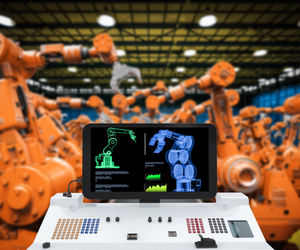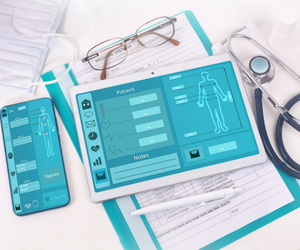The world is witnessing a rapid acceleration in the evolution of the mobile or wireless technology landscape. The telco industry has quickly progressed over a short time from 1G to 5G technology. Even though 5G continues to strengthen its foot to get universally acceptable, the telco industry is already pitching up for the next generation of 6G technology. To deal with this rapid evolution, telcos must focus on the most modern communication trends and technology for the transition from the 5G to the 6G era of connectivity.
However, the transition will not be easygoing as the communications framework should be designed and built differently. So, how can telcos get ready for this?
Explore the blog to know more about the emerging technology trends, enablers, and use cases for the 6G era and how it overcomes the 5G limitations!
Key Technology Drivers for 6G
6G vision is not a meager enhancement of 5G technology, however, it’s a transformative technology ensuring ubiquitous connectivity to connect human and Cyber-Physical Systems (CPS). This transformation is accelerated by some architectural and technological enhancements as illustrated below.
- Network Virtualization: Network Function Virtualization (NFV) replaces physical or dedicated hardware with Network Functions (NFs) that can run on a general purpose or Common-Off-The-Shell (COTS) hardware. NFV helps telco operators to scale their capabilities and performance on demand using these NFs. NFVs pave the way for highly flexible, programmable, reconfigurable, and dynamic networks in 6G. This lowers the Capital Expenses (CAPEX) and Operational Expenses (OPEX) of Service Providers (SPs)
- Multi-Access Edge Computing (MEC): MEC network architecture enables cloud-computing capabilities at the edge of the cellular network. MEC utilizes virtualized service platform which helps service providers to enhance both coverage and bandwidth and decrease latency. This is achieved by reducing core network traffic, signaling load, and thus enhancing service quality and user experience. This micro cloud deployed in the telecom operators’ network edge allows innovative applications and business models. To deploy MEC, telecom operators need to incorporate infrastructure such as storage, networking, local servers or computers, and accelerators at the edge.
5G network design uses relevant cutting-edge technologies, which include the combination of infrastructure moving towards virtualized Data Centers (DCs) or micro DCs, Open Radio Access Network (RAN), and Control Plane and User Plane Separation (CUPS). Besides, introducing Virtualized Network Functions (VNF) or Containerized Network Functions (CNF), the 6G networks enable cloud computing services, evolving the network cloudification in 5G to a cloud-native open network in 6G.
- Terahertz Communication: Terahertz communication becomes an extremely capable technology for 6G and beyond. THz waves can deliver a huge amount of data in a very short time, settling the issue of low data rate or low latency which 5G cannot resolve. This will provide wider bandwidth for extremely high data rate applications. As the number of connected devices increases in 6G, THz waves help SPs to prevail over the spectrum crunch observed in the lower electromagnetic spectrum.
- Artificial Intelligence (AI) and Machine Learning (ML): AI/ML concept helps to attain closed-loop automation and “zero-touch” network management through real-time data analytics. Such autonomous network can adapt to the changing environment and novel use cases requirements. AI/ML techniques can optimize, control, and orchestrate multi-vendor networks with proactive strategies and learning. This evolves network performance and services towards highly automated and intelligent operations.
6G will transform the growth of wireless from “connected things” to “connected intelligent things” in the network. The introduction of intelligence in the edge devices, edge AI becomes a disruptive technology for 6G networks. Edge AI will quicken the advancement of sensing, communication tactics, network optimizations, and application setups. This helps to automatically re-align and re-adapt to the network and service demands.
- Energy-Efficiency: As the data traffic increase rapidly with new advancements, it is utmost important to reduce the transmit power for huge data transfer. Telco industry becomes responsible to ensure that the next-generation networks and technologies will focus on economic growth and social sustainability. As we advance into the 6G era, green networks and devices lay a significant role to realize sustainability. The major requirement is a more energy-efficient and cost-efficient network infrastructure which produces less pollution in the environment. AI/ML based solutions can help 6G to achieve an optimized network framework which minimizes CO2 footprint, realizing sustainability.
The above-discussed technology drivers can steer the needs of the future use case scenarios. Let’s delve into some of the key futuristic use cases enabled by 6G.
6G Use Cases
6G use cases can be categorized into the following scenarios:
- Enhanced Human Interaction
- Enhanced massive machine communication
- Realizing high accuracy mapping, localization, and positioning services
| Industrial Automation
Foresees a digital transformation of smart manufacturing industries and activities through cyber-physical systems, IoT, edge computing, and AI |
Extended Reality (AR/VR)
Augmented Reality (AR) and Virtual Reality (VR) enables 3D virtual space known as Metaverse in the future. This immersive technology support holographic telepresence for social interface in the future. |
| Digital Healthcare Services
Digital healthcare, with 24/7 monitoring of critical parameters with the aid of various wearable medical devices. 6G telemedical model will be facilitated by body sensing and analytics combined with broad range connectivity |
3D Hyper-Precision Localization and Tracking
High-precision 3D localization and enhanced tracking abilities at centimeter level, can enable full automation for scenarios such as smart factories, hospitals, and other enterprises. |
In a Nutshell
Although 5G roll out are still in progress, telecom industry is looking ahead for the next-generation wireless technology 6G. 6G is expected to achieve the evolving user demands which cannot be promised by 5G. With all the experience from 5G deployments and services, 6G is likely to be commercialized by the start of 2030. 6G will offer supreme experience through hyper-connectivity encompassing humans and everything – to steer in an era of “Intelligence-of-Everything” which enables intelligent sensing and connectivity.











